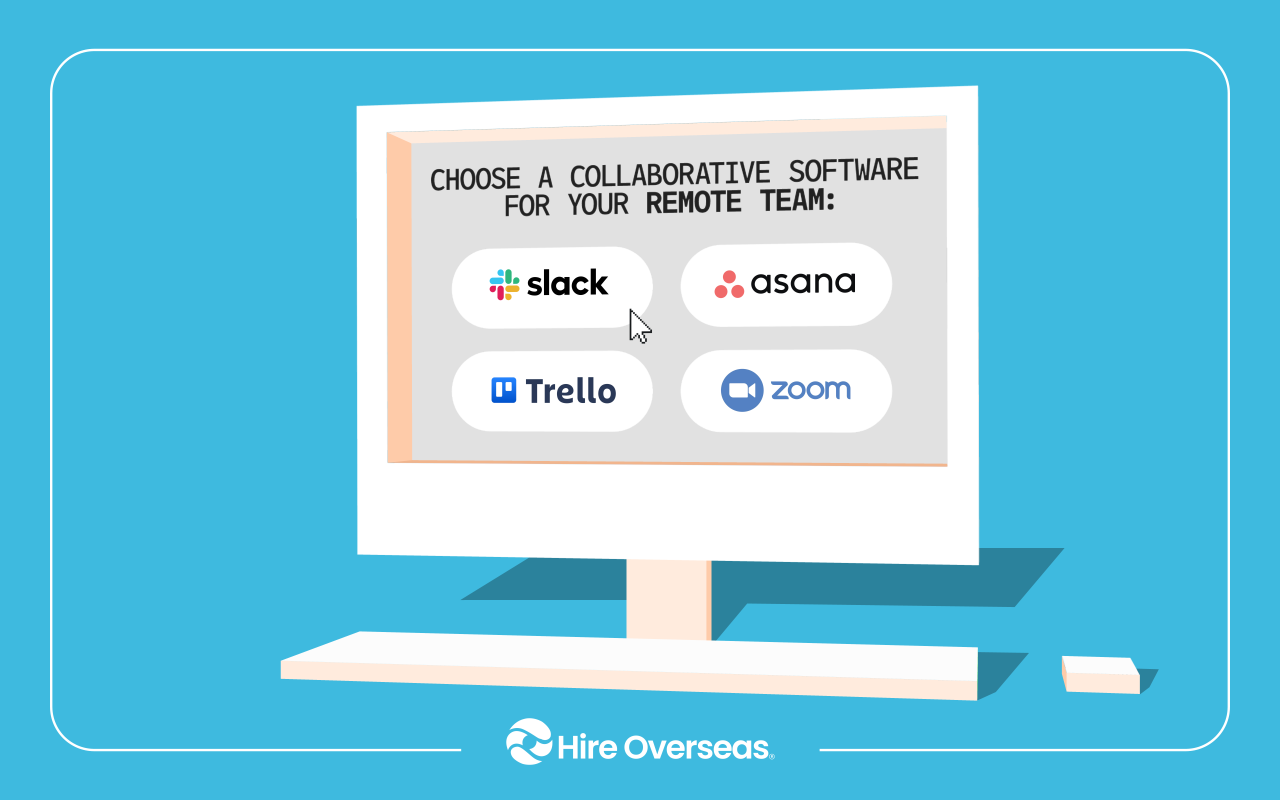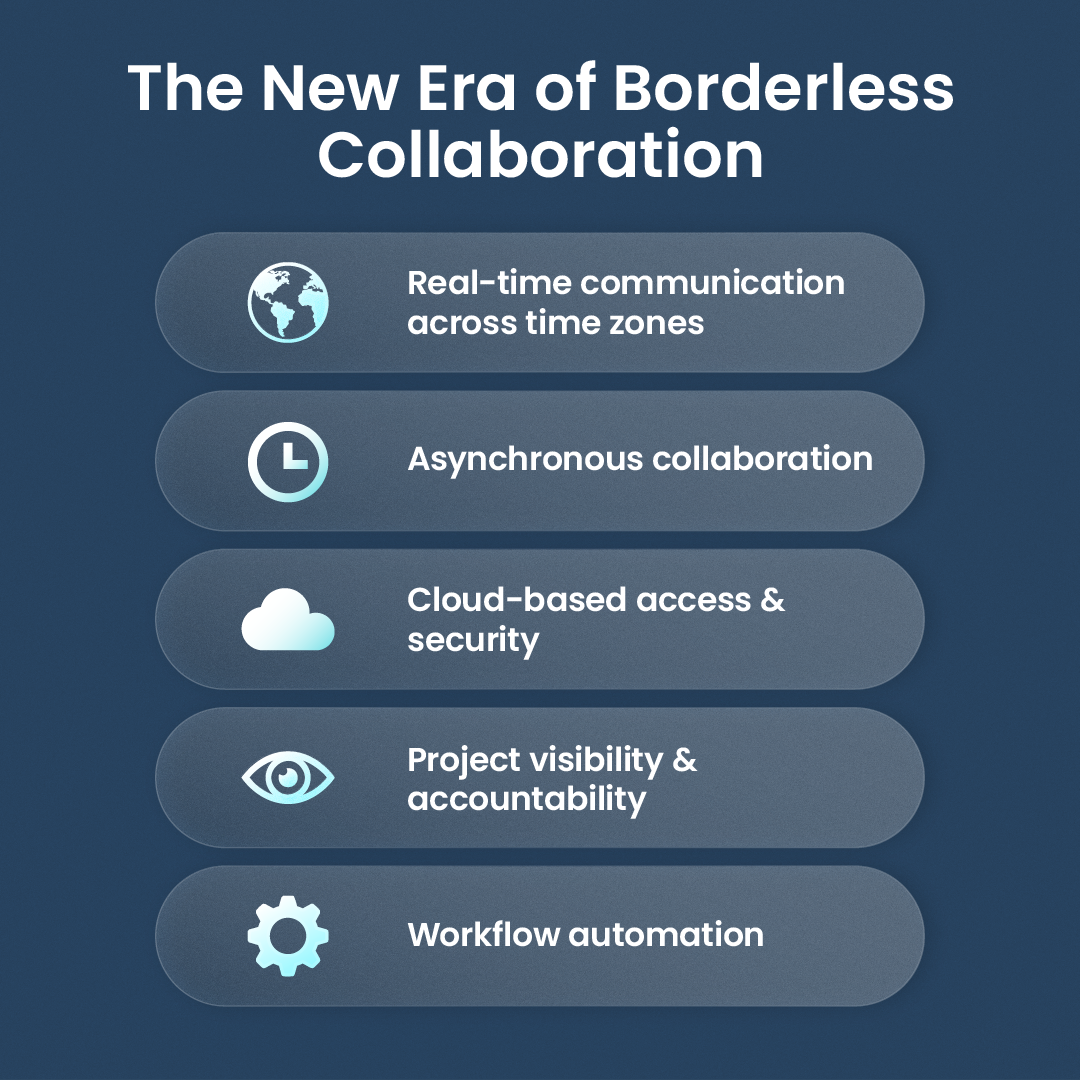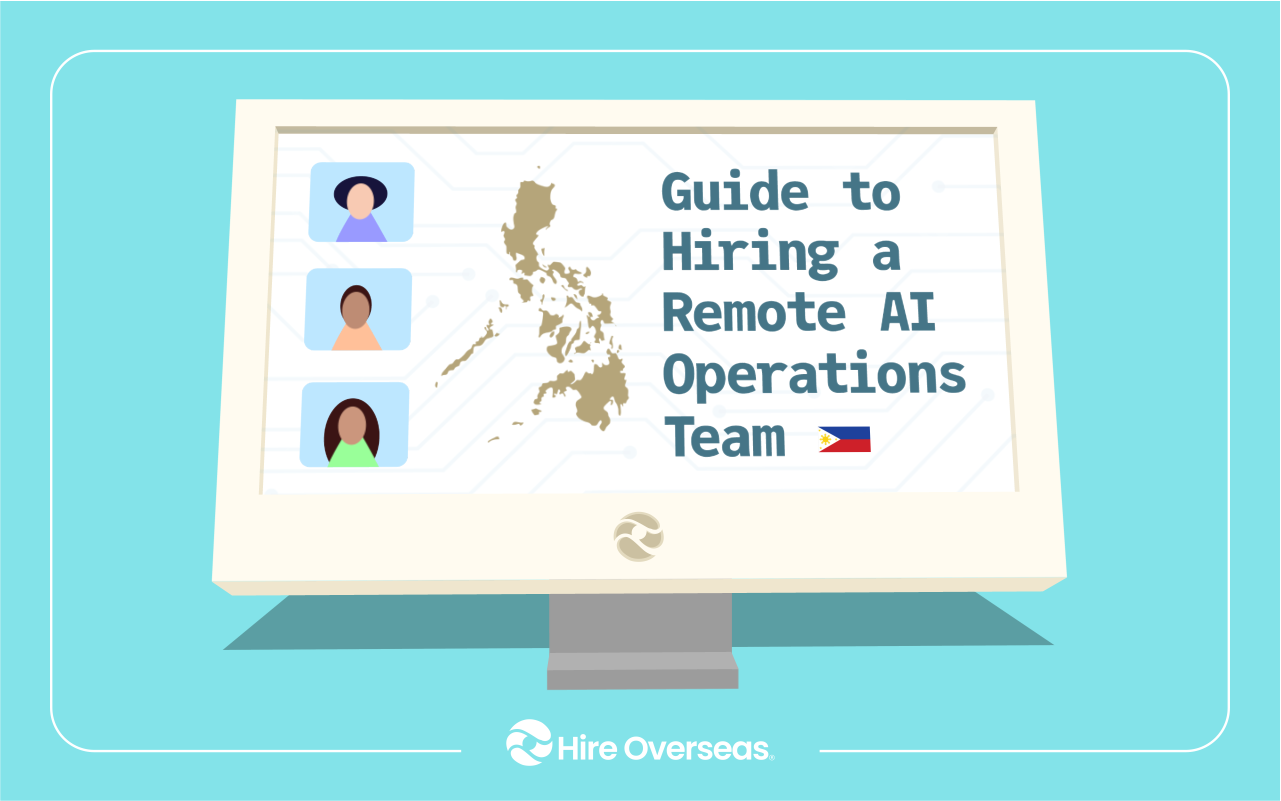Future-Ready Collaboration Tools for Remote Teams: Work Without Borders in 2025

Remote collaboration has become the foundation of modern work, transforming how businesses and professionals connect across continents. As global teams grow and hybrid models mature, the focus is shifting from simply communicating online to building digital environments where creativity and accountability thrive. The right collaboration tools for remote teams now go beyond messaging and meetings—they integrate AI, automation, and real-time connectivity to empower people everywhere. Whether you’re an employer managing distributed teams or a remote professional shaping your career, this guide explores how future-ready tools are redefining productivity, teamwork, and the human experience of work in 2025.
The New Era of Borderless Collaboration

Remote work isn’t just a perk anymore, it’s the backbone of modern business and career growth. From startups scaling with nearshore teams to enterprises hiring across continents, collaboration now happens everywhere, all the time. Technology has made it possible for teams to operate seamlessly across borders, cultures, and time zones—turning what was once a logistical challenge into a strategic advantage.
But thriving in this environment requires more than just a few video calls and chat threads. Effective remote team collaboration depends on systems built intentionally for distributed work—tools that foster transparency, engagement, and shared accountability.
A future-ready digital ecosystem supports:
- Real-time communication across time zones: keeping conversations flowing without delay, no matter where your team members are located.
- Asynchronous collaboration for flexible work: empowering people to contribute on their own schedule while maintaining continuous progress.
- Cloud-based collaboration software for secure access: ensuring every document, file, and update is available to the right people anytime, anywhere.
- Online project management platforms for visibility and accountability: helping teams track goals, deadlines, and ownership with complete clarity.
- Workflow automation tools to reduce repetitive tasks: freeing both employers and talent to focus on creative and strategic work that drives results.
Together, these technologies form the digital foundation of the future workplace—a space where productivity meets autonomy, where flexibility and accountability coexist, and where every team can truly work without borders.
Read next: Learn how to build alignment, trust, and productivity across time zones in our guide to Managing Remote Teams
The Best Future-Ready Collaboration Tools for Remote Teams in 2025
Let’s explore the best collaboration software redefining how global teams connect, communicate, and deliver results in 2025.
Real-Time Communication and Team Messaging Tools
Top Picks: Slack, Microsoft Teams, Google Chat
Communication is the heartbeat of distributed work. These team messaging apps keep everyone connected and informed—whether you’re brainstorming with a colleague or syncing across continents.
For Employers: Build structured communication channels that reduce noise and encourage open collaboration. Integrate tools like project trackers and HR systems directly into your chat environment.
For Talent: Stay engaged, share updates quickly, and maintain presence without constant meetings.
Slack’s workflow integrations, Teams’ enterprise-grade security, and Google Chat’s simplicity make them indispensable remote collaboration tools for 2025.
Project Management and Workflow Platforms
Top Picks: Asana, ClickUp, Trello, Monday.com
When visibility is everything, these online project management platforms help distributed teams stay perfectly aligned.
For Employers: Manage complex projects, assign ownership, and visualize timelines—all in one dashboard.
For Talent: Track tasks, manage personal deadlines, and collaborate asynchronously with teammates.
Modern project tools are evolving into workflow automation platforms, helping teams eliminate repetitive updates and focus on impact. Asana and ClickUp lead the way in AI-assisted productivity, while Trello and Monday.com remain ideal for visual thinkers.
Document Collaboration and Knowledge Sharing Tools
Top Picks: Google Workspace, Notion, Confluence, Dropbox Paper
Information flow is the backbone of remote work. These document sharing and co-editing tools enable real-time editing, version control, and centralized content hubs.
For Employers: Build scalable documentation systems that improve onboarding and reduce dependency on meetings.
For Talent: Access knowledge instantly, co-author content, and maintain creative momentum without delays.
These platforms are especially effective collaboration tools for remote L&D teams, ensuring learning, development, and communication all live in one shared digital space.
Video Conferencing and Virtual Meeting Solutions
Top Picks: Zoom, Google Meet, Microsoft Teams
Face-to-face communication still plays a vital role in digital collaboration. These video conferencing solutions help teams maintain human connection, even when they’re thousands of miles apart.
For Employers: Lead all-hands meetings, interviews, and client discussions with crystal-clear audio and integrated chat or polling tools.
For Talent: Build rapport, present updates, and stay visible to managers and peers.
New AI enhancements like auto-transcription, smart backgrounds, and meeting summaries are making these platforms more efficient than ever—solidifying them as essential remote work collaboration tools.
Visual Collaboration and Online Whiteboard Tools
Top Picks: Miro, FigJam, Lucidspark
Creativity and innovation flourish when teams can think visually. These online whiteboard tools turn ideas into interactive, collaborative maps.
For Employers: Facilitate agile sprint planning, design sessions, and strategy workshops visually in real time.
For Talent: Contribute ideas asynchronously, comment on visuals, and share progress visually.
With integrations into platforms like Jira, Slack, and Notion, Miro and FigJam are the go-to tools for remote agile teams building products collaboratively from anywhere.
Free Collaboration Tools for Remote Teams
Not every great tool requires a subscription. Many free collaboration tools for remote teams provide generous functionality—making them perfect for startups, small businesses, and freelancers working across borders.
Here’s a list of standout options for 2025:
Slack (Free Plan): Ideal for small teams that need structured communication and integrations with Google Drive or Trello.
Trello (Free): Perfect for lightweight project tracking with Kanban-style boards.
Google Workspace (Free Tier): Offers cloud storage, document co-editing, and real-time commenting.
ClickUp (Free Plan): Combines task tracking, goal setting, and time tracking in one easy-to-use interface.
Miro (Free Version): Great for small brainstorming sessions and visual planning with limited boards.
Zoom (Free Basic): Excellent for quick meetings and virtual team check-ins (40-minute limit per call).
Notion (Free for Individuals): A versatile tool for organizing notes, managing tasks, or creating shared knowledge bases.
Discord (Free): Once a gaming favorite, now a popular team collaboration tool for real-time voice and community discussions.
These best free collaboration tools for remote teams provide a cost-effective foundation for global collaboration—helping both employers and remote professionals stay connected, productive, and scalable from day one.
Hire Overseas Recommendation: Build Your Ideal Collaboration Stack
.webp)
When it comes to remote work, there’s no one-size-fits-all solution. The most effective global teams don’t just use tools—they combine them strategically to create a digital ecosystem that drives communication, creativity, and accountability.
At Hire Overseas, we’ve found that productivity isn’t about using more software, it’s about choosing the right mix that works together seamlessly.
Whether you’re an employer managing distributed teams or a remote professional refining your workflow, the key is alignment. The goal isn’t to use every tool available but to build a cohesive ecosystem where each platform connects naturally, enhances productivity, and empowers people to do their best work from anywhere.
Below are Hire Overseas-recommended tool combinations to help you work smarter and thrive in the borderless workplace of 2025.
Agile and Product Development Teams
Goal: Streamline sprint cycles, feedback loops, and product delivery.
Suggested Stack:
Jira or ClickUp – For agile sprint management and backlog tracking.
Slack – For instant communication and developer updates.
Miro – For wireframing, sprint retrospectives, and visual workflows.
GitHub or Bitbucket – For version control and code collaboration.
Zoom – For quick standups or sprint demos.
Why it works:
This setup balances structure with speed. Employers gain transparency over progress, while developers and designers can collaborate asynchronously—making it one of the best collaboration tools for remote agile teams.
Learning & Development (L&D) Teams
Goal: Create, share, and update training content for global workforces.
Suggested Stack:
Notion or Confluence – For course material management and documentation.
Google Workspace – For file sharing, slide decks, and real-time collaboration.
Loom – For recording short training videos and walkthroughs.
Slack – For feedback loops and learner support.
Miro – For workshop facilitation and brainstorming sessions.
Why it works:
This combination empowers remote L&D teams to design and distribute learning content seamlessly, fostering continuous professional growth—no matter where employees are located.
Creative and Marketing Teams
Goal: Brainstorm, create, and review content collaboratively.
Suggested Stack:
Asana or Monday.com – For campaign and content planning.
Figma or Canva for Teams – For visual design and creative collaboration.
Google Drive – For asset sharing and feedback management.
Slack – For quick creative feedback loops.
Miro – For brainstorming, moodboarding, and concept mapping.
Why it works:
This setup connects strategy and execution. It supports creative freedom while giving employers a clear view of project timelines and approvals.
Operations and HR Teams
Goal: Manage workflows, onboarding, and company-wide communication.
Suggested Stack:
ClickUp or Airtable – For HR workflow and candidate tracking.
Notion – For company handbooks and policy documentation.
Slack – For employee communication and recognition.
Zoom or Google Meet – For interviews and remote onboarding.
Zapier – To automate repetitive HR tasks (e.g., form submissions or approvals).
Why it works:
This combination supports employee collaboration software and builds a consistent digital culture—connecting departments, streamlining onboarding, and automating processes.
Remote Freelancers and Independent Professionals
Goal: Stay organized, professional, and connected while working with multiple clients.
Suggested Stack:
Trello or ClickUp (Free) – For task and project tracking.
Google Workspace (Free tier) – For communication, file sharing, and scheduling.
Zoom (Free) – For client meetings and check-ins.
Notion – For portfolio and document management.
Slack or Discord – For client or community collaboration.
Why it works:
This setup gives freelancers and contractors the same digital strength as larger teams. It’s flexible, affordable, and designed for productivity on the go—powered by some of the best free collaboration tools for remote teams.
💡Hire Overseas Pro Tip: Keep Your Stack Simple
The goal isn’t to adopt every tool—it’s to choose the few that integrate well and support your team’s core needs. The most productive organizations and professionals in 2025 are those who master a focused, interoperable toolkit rather than juggling dozens of disconnected platforms.
Learn how Filipino VAs and AI-driven tools are shaping the next generation of global collaboration in our post on Filipino VA and AI Tools
Smart Collaboration Practices for Employers and Remote Teams
In today’s borderless work environment, success depends on more than just the tools you use—it’s how you use them together. The right collaboration tools for remote teams don’t just improve efficiency; they create stronger communication, trust, and alignment across every level of the organization.
Here are some best practices to help both employers and remote professionals thrive in this digital-first era:
For Employers
Empower autonomy:
Give your teams the freedom to select the tools and workflows that help them perform best. Autonomy fosters accountability—when employees feel trusted, they’re more motivated, engaged, and productive.
Focus on outcomes:
Shift the focus from time spent to results delivered. Use project management and productivity platforms to track goals and measure progress, ensuring that performance is judged by impact, not hours.
Build culture digitally:
Remote work doesn’t mean culture disappears—it evolves. Use employee collaboration software and internal channels to celebrate milestones, share success stories, and keep the company spirit alive. Small gestures—like digital shoutouts or team chats—can make remote teams feel united.
For Remote Professionals
Master your toolkit:
Go beyond basic usage. Learn the shortcuts, automations, and integrations within your core apps to boost efficiency and demonstrate initiative. Being fluent in your tools makes you an invaluable part of any remote team.
Stay proactive:
Communication is your strongest asset in remote work. Share updates regularly, document progress clearly, and use asynchronous collaboration tools to keep projects moving without waiting for meetings.
Balance sync and async:
Not every discussion needs to be live. Use real-time communication for alignment and relationship-building, and asynchronous updates for focused, independent work. This balance keeps productivity high and burnout low.
In the digital workplace, thriving means blending independence with collaboration.
Employers who empower and professionals who communicate effectively build teams that are agile, aligned, and ready for the future of work—where collaboration knows no borders.
The Impact of the Right Collaboration Tools
The right collaboration tools do more than just make remote work easier—they can reshape how teams perform, engage, and stay together. While exact gains depend on context, multiple studies point to strong positive effects of remote and hybrid work when supported by intentional infrastructure.
Productivity uplift: A new study from King’s College London observed a 10.5 % productivity increase after teams shifted to remote work settings. (King's College London, 2025)
Growth in efficiency across economies: The U.S. Bureau of Labor Statistics found that for every one-percentage-point increase in the share of remote workers, total factor productivity rose by 0.08–0.09 points—after adjusting for pre-pandemic trends. (Bureau of Labor Statistics, 2024)
Stronger retention with flexible work: In a 2025 retention report, companies offering remote or flexible work saw 65% higher employee loyalty compared to those without such options. (WhatJobs, 2025)
Boost in job satisfaction: Surveys show that when employees gain flexibility, better work-life balance, and autonomy over schedules, their satisfaction increases dramatically. (SelectSoftware Reviews, 2023)
Why this matters:
For Employers: These numbers suggest that investing in modern remote collaboration software isn’t just a cost—it’s an investment in organizational performance. Better tools can translate into faster deliverables, lower attrition, and measurable ROI.
For Talent: A robust digital ecosystem doesn’t just make your job easier, it improves your everyday experience. From fewer context switches to better clarity of work, you’ll feel empowered and more confident in your role.
In other words, the right collaboration tools aren’t just “nice to have”—they’re a competitive differentiator in the future of work.
The Future of Remote Collaboration: Human-Centered, Borderless, and Bold
As we move through 2025, remote collaboration is no longer just about staying connected but about working smarter, simpler, and more humanly.
The latest generation of remote collaboration software is intelligent by design. AI-powered tools now summarize meetings, suggest next steps, automate repetitive tasks, and bridge time zones effortlessly.
But what makes this evolution truly remarkable is how it empowers people.
- For employers, it means scalable teams without burnout—built on data, empathy, and shared accountability.
- For talent, it means flexibility without isolation—the freedom to work anywhere while staying deeply connected to meaningful work.
In this new era, great teams aren’t defined by geography but by collaboration. The right tools for remote teams give organizations agility and professionals autonomy, helping both grow beyond traditional boundaries.
At Hire Overseas, we believe the future of work isn’t about replacing human connection with technology—it’s about enhancing it. When teams use digital ecosystems that foster trust and creativity, collaboration becomes more than a process, it becomes a bridge between possibility and performance.
Together, we’re entering a world where work isn’t limited by borders but elevated by collaboration.
Ready to build your borderless team?
Discover how Hire Overseas helps global businesses connect with top remote talent and scale with confidence.
FAQs About Future-Ready Collaboration Tools for Remote Teams
Are hybrid teams using the same collaboration platforms as fully remote teams?
Mostly yes, but hybrid teams often rely more on integrated platforms that bridge in-office and remote collaboration. Tools like Microsoft Teams, Slack, and Notion now sync physical and digital workflows, making hybrid communication smoother and more transparent.
How can small businesses afford effective collaboration tools?
Many top platforms offer free or low-cost plans with robust features. Small teams can combine free tiers of tools like Trello, Google Workspace, Notion, and Slack to build a powerful collaboration stack without major costs.
What are the biggest challenges of remote collaboration in 2025?
The main challenges include maintaining team engagement, managing time zone differences, ensuring data security, and avoiding tool fatigue. However, modern ecosystems with automation and AI-powered insights are helping overcome these issues.
How can collaboration tools strengthen company culture remotely?
They help teams celebrate wins, share updates, and foster transparency through digital channels. Using Slack communities, recognition bots, or Notion team spaces builds shared identity, helping remote employees feel valued and connected.
Are there industry-specific collaboration tools emerging in 2025?
Yes. Specialized collaboration software now caters to industries like creative marketing (Figma, Canva for Teams), product development (Jira, Miro), and learning & development (Notion, Loom)—each tailored for unique workflows.
How does Hire Overseas help businesses optimize their collaboration stack?
Hire Overseas helps businesses build smarter, more connected global teams by curating and integrating the ideal collaboration stack for their specific goals. Instead of overwhelming teams with too many tools, we focus on creating a seamless digital ecosystem—where communication, project management, and automation work in harmony.
Unlock Global Talent with Ease
Hire Overseas streamlines your hiring process from start to finish, connecting you with top global talent.




